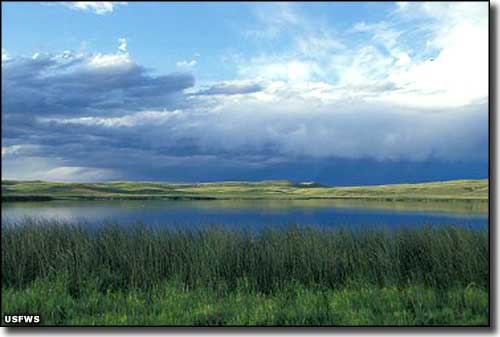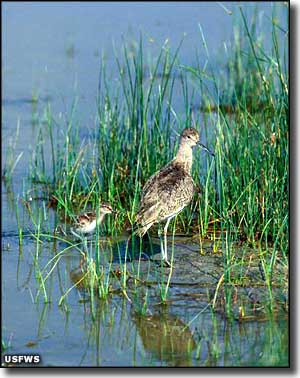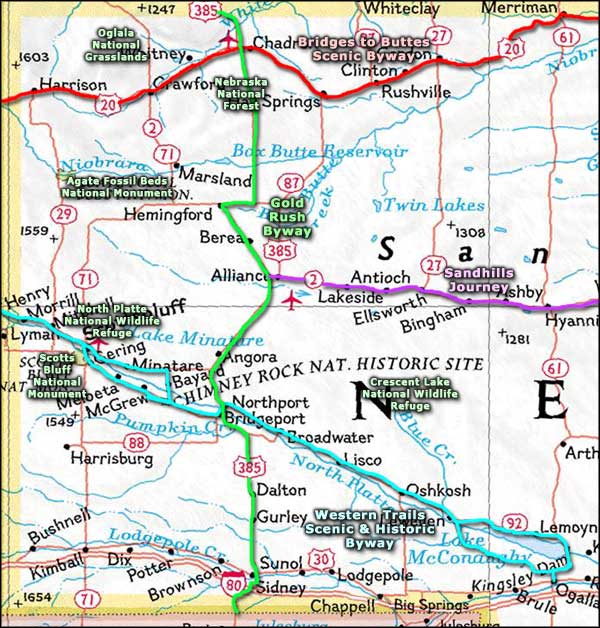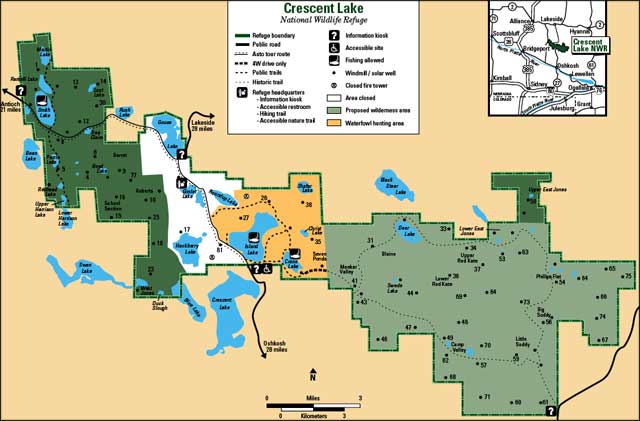Crescent Lake National Wildlife Refuge

A typical view at Crescent Lake National Wildlife Refuge

Crescent Lake National Wildlife Refuge is a 45,818-acre property covering a large area of grass-stabilized sand dunes with 21 small lakes and numerous ponds in the panhandle of Nebraska. Some dunes are covered with a mix of grasses and shrubs, others are bare... but most carry a good cover of native grasses. The property is managed to keep it just the way it was back when our great-great-great-grandfathers roamed the West.
The sand was deposited millenia ago when the Cretaceous Inland Sea dried up and revealed the landscape where most of Colorado and Wyoming are now. The winds carried that sea-bottom sand eastward and deposited it across Kansas, Nebraska and parts of South Dakota. During periods of extensive glaciation, the sand was compacted and the dunes "frozen" in place, only to be exposed when the glaciers retreated. But that action also created the dips and hollows where the dune field drops below the local water table and allows the formation of lakes and ponds.
More than 275 species of birds have been seen on the property in the course of a normal year with more than 200,000 waterfowl visiting during the annual fall migration. Among them are as many as twenty nesting Bald eagle pairs. Mammals found on the property include mule deer, white-tailed der, pronghorn, prairie dog, cottontail, coyote, bobcat, beaver and raccoon. The deeper lakes also hold good populations of walleye, largemouth bass, bluegill, carp and yellow perch.
Crescent Lake NWR is located between Oshkosh and Lakeside, Nebraska (the office is about 28 miles north of Oshkosh, halfway between Oshkosh and Lakeside). Together with North Platte National Wildlife Refuge, Crescent Lake NWR is part of the Crescent Lake-North Platte National Wildlife Refuge Complex.

